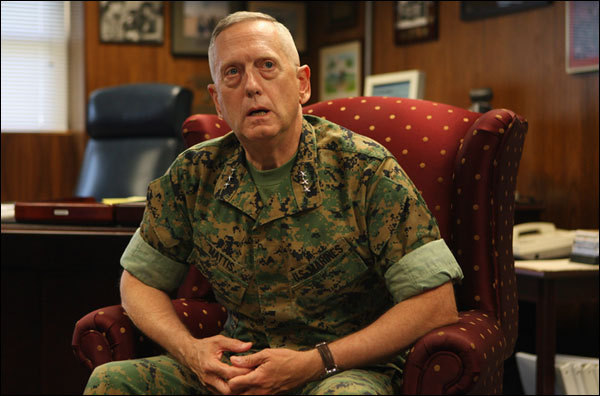From his lead position, Mattis stayed close to the regiments involved in the fiercest fighting and got a good sense for events on the battlefield. The general refused to believe that images on a computer screen in the quiet hum of a command post could tell him what he needed to know about how the battle was progressing and what his subordinates required. Mattis could be ruthless; he would relieve the commander of one of his regiments in the middle of a campaign. In the marines, only performance counts. Mattis picked several officers to act as what he called his “eyes only” representatives. They had no authority but, he said, like “Frederick the Great’s focused telescope or Wellington’s lieutenants in the Peninsula Campaign,” they had the duty of wandering the battlefield to keep him informed of things they thought he needed to know: troops or officers who were exhausted by combat, supplies that were not reaching the front line, and the other human factors that can be crucial in combat. -page 116 and 117 of The Iraq War: A Military History, By Williamson Murray, Robert Scales
The Slate put this out last year, but I just recently stumbled upon it and wanted to share. General Mattis is a Marine’s Marine and he is very much respected. With that said, when I found out that he was implementing some concepts that are familiar here in Jundism and some of my leadership posts, I perked up.
Specifically, the mystery shopper concept or having folks on the inside of your organization to give you some honest feedback about the true health of your company or military unit. With this data, you can actually make adjustments to policy that will better serve the mission or contract.
I also liked the focus on innovation and gaining feedback. Or, command and feedback, which is a play on the phrase command and control. This also led to the best quote in the article below about where that feedback or innovation could come from.
If you are always on the hunt for complacency, argues Mattis, you will reward risk-takers, and people who thrive in uncertainty. “Take the mavericks in your service,” he tells new officers, “the ones that wear rumpled uniforms and look like a bag of mud but whose ideas are so offsetting that they actually upset the people in the bureaucracy. One of your primary jobs is to take the risk and protect these people, because if they are not nurtured in your service, the enemy will bring their contrary ideas to you.”
That is awesome and all companies and military units should learn from this. Leaders should dare to listen and seek feedback from all quarters of their organization, and soldiers/contractors should dare to come forward and disagree, or present the better idea. Any policies and actions within an organization that supports this command and feedback process should be looked at and attempted.
We should constantly be supporting and pushing innovation within the ranks, and constantly seeking feedback and using these innovations in order to continuously improve the organization/mission/contract/war fighting/strategy. Awesome stuff. –Matt

Gen. James Mattis, USMC The general who is fighting a constant battle to keep the military innovating.
By John Dickerson
Aug. 9, 2011
When speaking to rising officers, Marine Gen. James Mattis likes to tell the story of the British Navy. At the turn of the 19th century, it had no rival in the world, but 100 years later it had grown complacent in dominance. Officers amassed rules, ribbons, and rituals that had little to do with the changing nature of war. “They no longer had captains of wars,” he tells them, “but captains of ships.”
As commander of the U.S. Central Command, Mattis oversees the wars in Afghanistan and Iraq, but his career mission has been against complacency. In modern warfare the reliance on better technology and superior firepower deadens the talent for innovation, he argues. This blinds some officers to emerging threats and slows their ability to react to them. The U.S. military, he argues “must avoid becoming dominant and irrelevant.”